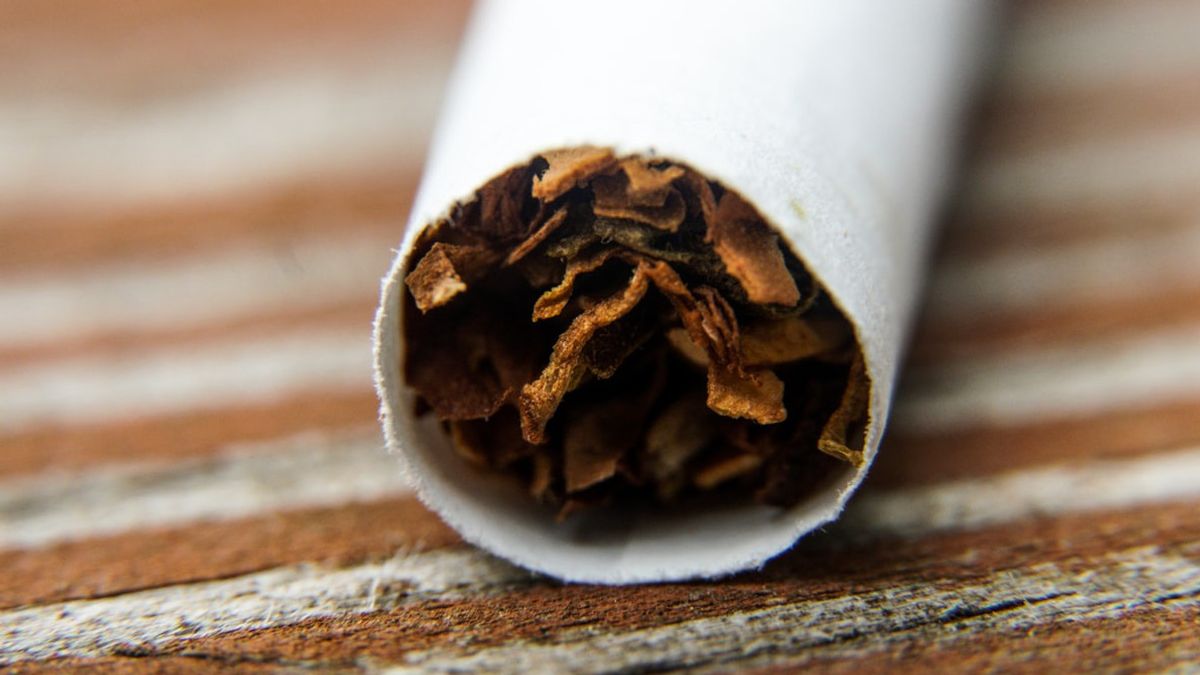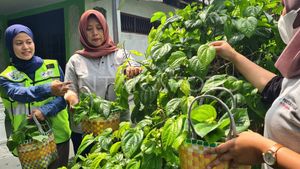JAKARTA - The tobacco commodity in Indonesia was once the prima donna among seasonal farmers. In Indonesia, there are various types of tobacco farming with varying qualities.
Generally, the height of the planted area makes the quality of the tobacco different. Grade 1 tobacco is planted at an altitude of 1,200-1,400 masl, while grade 2 is at an altitude of 800-1000 masl.
The different qualities of tobacco have their own market for small to large cigarette companies, both home businesses and factories.
Public interest in cultivating tobacco is reflected in the distribution of cigarette production areas in various provinces, such as Aceh, North Sumatra, West Java, Central Java, Yogyakarta, East Java, Central Java, South Sulawesi and West Nusa Tenggara.
Among these areas, member of Commission XI DPR Mukhamad Misbakhun once stated that East Java province is an area that has a significant contribution to national tobacco production. A number of areas in East Java such as Madura, Probolinggo, Pasuruan, Jember, and Banyuwangi are tobacco producers, which cover 47 percent of the national tobacco production.
Even though most of the factories have a relatively small production scale, the home cigarette manufacturers in the aforementioned provinces have played a significant role in supporting the community's economy at the grassroots level. Some of the names of small-to-medium scale manufacturers that still exist include the Cigarette Factory (PR) Corn, PR Alaina, PR Bokormas, PR Jiwa Manunggal, and PR Cakraguna Cipta.
According to the Chairman of the Indonesian Cigarette Production Partners Association (MPSI), Djoko Wahyudi, small and medium cigarette manufacturers are the biggest absorbers of standard quality tobacco. In practice, different grades of tobacco also affect absorption by each manufacturer.
The high quality will usually be supplied to the big cigarette companies, while the standard quality will be taken by the home factories. This makes the tobacco commodity in Indonesia has its own market and grows many manufacturing scales in various provinces.
In addition, small and medium cigarette manufacturers are also suppliers of cigarettes at economical prices to lower middle class consumers.
"This heterogeneity or diversity is important in complementing the needs of people from diverse economic classes as well as being the main source of livelihood for sustaining life," said Djoko in a statement received by VOI, Wednesday, May 6.
However, the existence of cigarette factories in Indonesia is known to have shrunk in recent years. In 2011 there were 1,540 small, medium, and large cigarette factories in Indonesia. However, in 2017 this number dropped drastically to 487 factories alone.
Asked about the future of the Tobacco Products Industry (IHT) players in the midst of unfavorable economic conditions, Djoko said that the government should be more sensitive when making policies that could have a further impact on the sustainability of the tobacco industry. Especially at the moment there is a massive economic slowdown due to the impact of the pandemic which has also injured many small and medium enterprises.
"I hope the government can create regulations that protect IHT players and accommodate the needs of this heterogeneous market. We have many small and medium business partners who are very dependent on regulatory stability," he said.
There are discourses for changing policies, said Djoko, so that they should not be continued because it will make it difficult for companies to develop strategies, especially during the economic downturn that occurred as a result of the COVID-19 outbreak.
Regarding the existence of tobacco commodities, the General Chairperson of the National Leadership Council of the Indonesian Tobacco Farmers Association (APTI), Agus Parmuji, stated that the protection of the national tobacco commodity must continue to be considered. If more and more cigarette factories, especially the small and medium groups, go out of business, the absorption of tobacco commodities will also decrease.
"What about the fate of domestic tobacco commodities and the continuity of tobacco farmers. Clear and unchanging rules are needed so as not to threaten small-medium scale businesses and of course tobacco farmers," said Agus.
The diversity of tobacco product factories in Indonesia is recognized and clearly summarized in the Minister of Finance Regulation (PMK) regarding tobacco excise rates. In this regulation, it is stated that the categorization of tobacco manufacturers in Indonesia is based on the type of cigarette, namely SKM (Machine Kretek Cigarette), SPM (Machine White Cigarette), and SKT (Hand Kretek Cigarette), the manufacturing class is based on the amount of production each year, as well as the Retail Selling Price ( HJE) from the cigarette products it produces.
From these regulations, it is clear that in Indonesia there are different types of manufacturers depending on their production capacity. On this basis also, the government sets different excise rates.
Therefore, Agus emphasized, the importance of ensuring that the division of categories remains as it should be in order to be able to maintain the existence of the national tobacco commodity. Moreover, this concerns the source of the livelihoods of around three million farmers and gives life to around 245,371 thousand hectares of land.
"In order to protect tobacco farmers who are very dependent on the continuity of the cigarette industry business in Indonesia, the government needs to develop a stable policy towards IHT in the future without the need to continue to change the existing ones," he concluded.
It can be said that the burden of IHT actors in Indonesia is currently increasing. After facing a drastic increase in HJE and CHT in early 2020, entering the second quarter of the Indonesian economy was tested by the spread of the COVID-19 outbreak which hit many industries in the country including IHT.
The decreasing productivity of manufacturers in several tobacco center cities and the reduced purchasing power of the people in the midst of this situation has certainly shaken many manufacturers, especially small and medium-sized manufacturers. Moreover, this impact is predicted to recover gradually in 2021.
Therefore, for the long-term sustainability of this heterogeneous industry, as well as those who are sheltered in it, IHT players really hope that the government can maintain the current rules that are equally valid for all parties, without implementing changes that make conditions more uncertain.
The English, Chinese, Japanese, Arabic, and French versions are automatically generated by the AI. So there may still be inaccuracies in translating, please always see Indonesian as our main language. (system supported by DigitalSiber.id)













